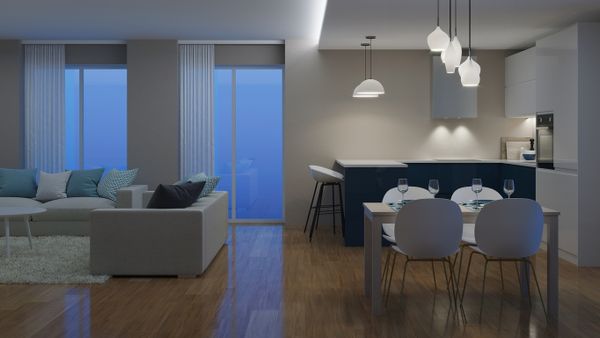
Lighting is a crucial element in any space, influencing the atmosphere, functionality, and overall aesthetics. When it comes to planning your lighting scheme, finding the right balance between quantity and budget is essential. Striking this balance ensures that you achieve optimal results without breaking the bank. In this article, we'll explore effective strategies for balancing your lighting budget, offering insights into making informed decisions that enhance your space while staying within financial constraints.
Understanding Your Lighting Needs:
Before delving into the budgeting process, it's crucial to assess your lighting needs. Different spaces require varied lighting solutions based on their functions and the ambiance you aim to create. Begin by identifying key areas, such as living spaces, work areas, and accent zones, each demanding a unique lighting approach. Understanding the purpose of each space helps you prioritize where to allocate your lighting budget effectively.
Setting Priorities:
Once you've identified the key areas in your space, it's time to set priorities. Determine which spaces require the most attention in terms of lighting quality and quantity. For example, a home office or kitchen may require brighter, task-oriented lighting, while living rooms and bedrooms may benefit from a combination of ambient and accent lighting. By establishing priorities, you can allocate a larger portion of your budget to critical areas, ensuring they receive the attention they deserve.
Energy-Efficient Lighting Options:
Balancing your lighting budget doesn't mean compromising on quality. Opting for energy-efficient lighting options can be a cost-effective strategy in the long run. LED bulbs, for instance, may have a slightly higher upfront cost, but their energy efficiency and longer lifespan result in significant savings on utility bills and replacement costs over time. Evaluate the energy efficiency ratings of different lighting fixtures to make informed decisions that align with both your budget and sustainability goals.
Strategic Placement for Impact:
Strategic placement of lighting fixtures can have a significant impact on the overall ambiance of a space. Instead of investing in an excess of fixtures, focus on placing them strategically to maximize their effectiveness. For example, using wall sconces to highlight architectural features or installing recessed lighting to create an illusion of space can achieve a visually appealing result without overloading the budget. Consider consulting with a lighting designer to get professional insights into the most effective placement for your specific space.
Multi-Functional Fixtures:
Opt for multi-functional lighting fixtures that serve more than one purpose. For instance, choosing a ceiling fan with integrated lighting provides both illumination and climate control in one fixture. This approach allows you to streamline your lighting budget by investing in fixtures that offer dual functionalities, reducing the need for separate purchases.
Smart Lighting Controls:
Integrating smart lighting controls into your design not only adds a modern touch but also allows for more efficient use of lighting. Smart controls enable you to adjust brightness levels, set schedules, and even change color temperatures remotely. While the initial investment in smart technology might be higher, the long-term benefits in terms of energy savings and personalized control can justify the expense. Additionally, many smart lighting systems are modular, allowing you to start small and expand as your budget allows.
Mixing Fixture Types:
Achieve a well-rounded lighting design by mixing different types of fixtures. Instead of relying solely on one style, blend ambient, task, and accent lighting to create a layered and visually interesting space. Mixing fixtures not only adds depth to the design but also allows you to explore a variety of price points, accommodating your budget constraints. Be mindful of cohesion in design to ensure a harmonious and balanced look.
Comparing Prices and Brands:
Before making any lighting purchases, take the time to research and compare prices and brands. Lighting fixtures can vary widely in cost, even for similar styles and functionalities. Look for reputable brands that offer a balance between quality and affordability. Online reviews and testimonials can provide valuable insights into the durability and performance of different fixtures, helping you make informed decisions that align with your budget.
Utilizing Natural Light:
Maximize the use of natural light to supplement your artificial lighting design. Consider the orientation of your space and strategically place windows or skylights to harness natural sunlight. Natural light not only reduces the need for artificial lighting during the day but also enhances the overall well-being of occupants. This approach can be especially beneficial in common areas and workspaces.
Consulting with Lighting Professionals:
When in doubt, seek guidance from lighting professionals. Consulting with experts in the field can provide valuable insights into cost-effective solutions tailored to your specific needs. Lighting designers or consultants can assist in creating a comprehensive lighting plan, ensuring that your budget is allocated where it matters most and that you achieve the desired aesthetic and functionality.
Balancing your lighting budget requires a thoughtful and strategic approach to ensure optimal results without overspending. By understanding your lighting needs, setting priorities, and exploring cost-effective options, you can create a well-lit and visually appealing space that aligns with your budget constraints. Whether through DIY projects, smart technology integration, or strategic placement, the key is to find a harmonious balance that enhances both the functionality and aesthetics of your environment without compromising your financial goals.